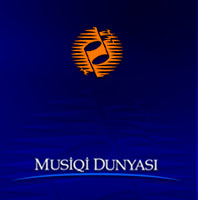|
ÁÈÇß ÉÀÇÛÐËÀÐ...
DANCES OF KARACHAY PEOPLE LIVING IN TURKEY
Äî÷. Äð. Ýöðáöç ÀÊÒÀØ(Ûçìèð, Òóðêåé), Ì. Òåêèí ÊÎ×ÊÀÐ (Åñêèñåùèð, Òóðêåé)
ÒÖÐÊÈÉÅ ÂÅ ÀÇÅÐÁÀÉÆÀÍÄÀ ËÀÉËÀÉËÀÐ ÂÅ ÍÈÍÍÈËÅÐ - ×ÎÆÓÊ ÔÎËÊËÎÐ ÚÀÍÐÛ
Àäíàí Òþíåë
ÒÖÐÊÈÉÅ’ÄÅ ÂÎÊÀË ÒÀÐÈÙÈÍ ÝÅËÈØÈÌÈ
Åìåë Øåíîæàê
ÓÉÝÓÐ ÌÖÇÈÊ ÊÖËÒÖÐÖÍÖÍ ÈÑËÀÌÈÉÅÒÒÅÍ ÞÍÆÅ ÂÅ ÈÑËÀÌÈÉÅÒÅ ÝÅ×ÈØ ÄÞÍÅÌÈÍÄÅÊÈ ÄÓÐÓÌÓ ÖÇÅÐÈÍÅ
Íóðè ÌÀÙÌÓÒ
|
|
Introduction:
Today in Turkey many different nationalities from many different continents such as Africa, America, Europe, Caucasian, Transcaucasia, Asia as well as Asia-minor live in peace side by side. Although some of these nationalities such as Americans, Russians, Europeans, Africans, Arabs and some others have moved to Turkey in the recent decades on their own pleasure, some of the others had to migrate. For example, many of the Caucasian tribes from Northern part of Caucasus Mountains as well as Trans-Caucasian peoples such as Azerbaijanis and Georgians were forced by Russians to migrate to the Ottoman land which created extra problems besides the economic and political difficulties that Ottomans had. “During its weakest economic and political era, Ottoman Empire had confronted by a great migration of Muslim and Turkish speaking people from Caucasus, Krimea and the Balkans who brought their tangible and intangible cultural assets with them. Thus, every ethnic group with their language, religion and traditions had started a new life in the Ottoman land.” Stated a colleague of mine at another symposium regarding the difficult times that Ottomans had in time. 1
Most of these Caucasian tribes were moving in mass populations: in 1861 Daghestanians, between 1863 – 1864 Adiges, Abhazaians, all of the Ubýh tribe, many of Abzeh, Shapsýg, Natuhay, Jane, Temirgoys and almost half of Besleneys migrated to the Ottoman land. While most of Kabardinians were not affected by this migration and chose to stay in Caucasia, some migrated. The other big wave of migration from Caucasia started around 1877 and 1878, and continued until after the war between Ottomans and Russia. During this era most of Karachay-Malkars who lived on the skirts of famous Elbrus Mountain migrated. 2
As a result, between 18th and 19th century more than 600 thousand people migrated to Ottoman land which is the modern Turkey now. Due to this big migration many tribes of Caucasian as well as Trans-Caucasian people live in Turkey. There fore, today Turkey contains a broad mixture of Caucasian as well as Trans-Caucasian traditions within its culture.
The Roots and Cultural Background of Karachay People:
Karachays share the same cultural values with the other Caucasian tribes because they have been living in the Northern Caucasia for centuries. How ever, most historians, especially the French, German and Russian historians who conducted a research in Caucasus around 17th and 18th century relate the origin of Karachay people to Middle-Eastern and European civilizations there fore call them non-Caucasians living in Caucasia. The fallowing quotation from Barbaros Ünlü some what supports this claim: “The most detailed information about the roots of Karachays is revealed by the Karachay historian Umar Aliyev. According to him the roots of Karachays originate from Middle Eastern and European civilizations such as Iskit, Sarmat and Alan, and also from Central Asian Turkish communities such as the Huns, Hazars, Kýpchaks and Bulgars. Many words from the Alan language were found during the research conducted on the Karachay language and also on the archeological findings in the region. Hence, it is concluded that Karachay culture originates from the Alan civilization.”3
Another research about the origin of Karachay people also relates them to the Turkic speaking civilizations and accepts them as non-caucasians. Aydýn O. Erkan, a prominent researcher states in his book Tarih Boyunca Kafkasya (Caucasian Through out the History) that the famous French archaeolog and an anthropolog Ernest Chantre shows Karachays as non-Caucasians in the 5th volume of his five volume work that is the result of his great excavation project in Caucasia. 4
Although Karachays have the European and Middle-Eastern origin according to the historians and for the fact that they speak a different dialect of Turkish which belongs to the Kipchak branch of Turkish language, culturally, they resemble more Caucasian than Turkish, because of their long settlements in the Northern Caucasia. Following quotation supports this long settlement: “Before Diaspora, Karachays were living at the hard and sloppy valleys of the highest peaks over the Caucasians, known as Elbrus Mountain. They migrated because of the wars and social unrests confronted in their region. 5
Today, in the Russian Federation within the Republic of Northern Caucasian Regions, some Karachays reside in Karachay-Circassian Region that includes the sub-regions of Teberda, Duut, Cazlýk, Uckulan, Kart-Curt, Hurzuk, Uckoken, Cogetey and some reside in Cegem, Holam, Baksan and Bizingi of Balkar Region.
 Karachays were the only Turkish speaking Muslim Caucasians who migrated to Turkey in great numbers. About 15 thousand Karachay-Balkars migrated in two different times and in two different waves. The first and relatively a small group moved to Ottoman land in1885; the big wave fallowed this in 1904. During the first wave they came to Anatolia via Georgia together with their Caucasian neighbor Kabardeys and settled down around Eskiþehir (Yazılıkaya), Kayseri (Pınarbaşı and Eğrisöğüt), Tokat and Sivas. The second wave came to Istanbul and Izmit first from Sohumi Port in Abhazia and then they separated in to different settlements around Ankara (Yağlıpınar), Eskisehir (Yakapınar), Afyon (Kilise), Akhisar (Doðlat) and Konya (Bashoyuk). All of these settlements were arranged and conducted by the Ottoman Empire with the help of Ottoman missionaries (Efendiler). How ever, Karachays did not only move to Anatolia. Some of them moved to Syria and the others selected New Jersey, USA as their new residential area after the World War II.6 Karachays were the only Turkish speaking Muslim Caucasians who migrated to Turkey in great numbers. About 15 thousand Karachay-Balkars migrated in two different times and in two different waves. The first and relatively a small group moved to Ottoman land in1885; the big wave fallowed this in 1904. During the first wave they came to Anatolia via Georgia together with their Caucasian neighbor Kabardeys and settled down around Eskiþehir (Yazılıkaya), Kayseri (Pınarbaşı and Eğrisöğüt), Tokat and Sivas. The second wave came to Istanbul and Izmit first from Sohumi Port in Abhazia and then they separated in to different settlements around Ankara (Yağlıpınar), Eskisehir (Yakapınar), Afyon (Kilise), Akhisar (Doðlat) and Konya (Bashoyuk). All of these settlements were arranged and conducted by the Ottoman Empire with the help of Ottoman missionaries (Efendiler). How ever, Karachays did not only move to Anatolia. Some of them moved to Syria and the others selected New Jersey, USA as their new residential area after the World War II.6
1. KOÇKAR, M. Tekin.“Teknolojik Gelişmelerin Halk Kültüründeki Değişime Etkisi: Ertuğrul Köyü Örneği” Kültür ve Turizm Bakanlığı-Kocaeli Üniversitesi-Motif Halk Oyunları Öğretim ve Eğitim Vakfı, Halk Kültüründe Değişim Uluslararası Sempozyumu Bildirileri, Kocaeli, 17-19 Aralık, 2004, ss.326-327
2. KOÇKAR, M. Tekin. a.g.e., ss.326-327
3. ÜNLÜ, Ömer Barbaros. Abezek: A “Choreographic Poem”, Unpublished Presentation Project, ICTM Symposium, Italy, 2001. s.1
4. ERKAN, Aydın Osman. “Tarih Boyunca Kafkasya”, Çiviyazıları, İstanbul, 1999, s. 82.
5. ÜNLÜ, Ömer Barbaros. “Abezek” a “Choreographic Poem”, Unpublished Presentation Project, ICTM, Italy, 2001. s.1
6. KOÇKAR, M. Tekin. “Teknolojik Gelişmelerin Halk Kültüründeki Değişime Etkisi: Ertuğrul Köyü Örneği” Kültür ve Turizm Bakanlığı-Kocaeli Üniversitesi-Motif Halk Oyunları Öğretim ve Eğitim Vakfı, Halk Kültüründe Değişim Uluslararası Sempozyumu Bildirileri, Kocaeli, 17-19 Aralık, 2004, ss.326-327
Ìàòåðèàëëàðëà áöòþâëöêäÿ òàíûø îëìàã ö÷öí úóðíàëûí «Harmony» ñàéòûíà ìöðàæèÿò åäÿ áèëÿðñèíèç.
Ñ ïîëíîé âåðñèåé ñòàòüè âû ìîæåòå îçíàêîìèòüñÿ â ýëåêòðîííîì æóðíàëå "Harmony".
|



